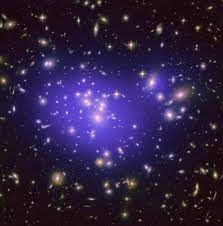It was Edwin Hubble who in 1929 proposed that the universe was expanding and galaxies moving farther away from us. This laid the groundwork for understanding the origins of our universe and its evolution, Indian researchers have now measured a significantly improved estimate of the expansion rate of the Universe, thanks to gravitational waves that have been detected recently.
An international team of researchers including Indian scientists from the LIGO-India Scientific Collaboration (LISC) have analysed the recently detected gravitational waves to measure an improved estimate of the expansion rate of the Universe, which is known as the Hubble constant.
Gravitational waves are an invisible ripple in space that was first discovered by Albert Einstein over 100 years ago. The 35 newly detected gravitational waves take the total number of such observations to 90 since we first detected it in 2015. 32 of these ripples were detected from pairs of merging black holes, while three others likely come from the collision of a neutron star and a black hole.
Dr Surhud More of the Inter-University Centre for Astronomy & Astrophysics (IUCAA), Pune played a key role in the planning, execution and review of the analyses of the determination of the Hubble constant using gravitational waves data and associated galaxy catalogues.
HOW IS THE EXPANSION OF THE UNIVERSE MEASURED?
Gravitational waves act as a siren in the universe, their distances can be inferred from how loud they appear on the detectors. A precise measurement of the expansion rate of the universe requires inference of how fast the galaxies that host these events move away from us.
Gravitational waves can be one of the most powerful tools that can be used to chart the speed of expansion of the universe.
“Accurate measurement of the current expansion rate of the Universe (the Hubble constant) is one of the biggest problems in cosmology today. Our measurement of the Hubble constant from the newly released catalogue of GW events shows that gravitational waves have the potential to resolve this problem,” Dr Surhud More said in a statement.
LIGO-INDIA DETECTOR TO HELP IN STUDYING EXPANSION RATE
Indian scientists are hopeful that the LIGO-India project, which aims to build one of the most sensitive detectors in the country will help in understanding the mysterious phenomenons of the universe. It will not only help in understanding and analysing the gravitational waves more precisely but also look for the elusive dark energy.
“The Indian scientific community looks forward to the commissioning of LIGO-India, which will significantly enhance the potential to pinpoint the location of the gravitational wave events. This will help to constrain not only the Hubble constant but also dark energy, a mysterious component of the Universe which causes an accelerated expansion of the Universe,” Dr Surhud More added.
The current detections were done by an international team of scientists including Australian researchers from the ARC Centre of Excellence for Gravitational Wave Discovery (OzGrav) between November 2019 to March 2020. Scientists detected the current batch of waves emerging from mergers between possible neutron star – black hole pairs, a merger between a black hole and an object which could either be a light black hole or a heavy neutron star. While others were from a massive pair of black holes orbiting each other, with a combined mass 145 times heavier than the Sun.
The LIGO and Virgo observatories are currently undergoing upgrades before the upcoming fourth observing run, expected to begin toward the end of 2022.







Leave a Reply